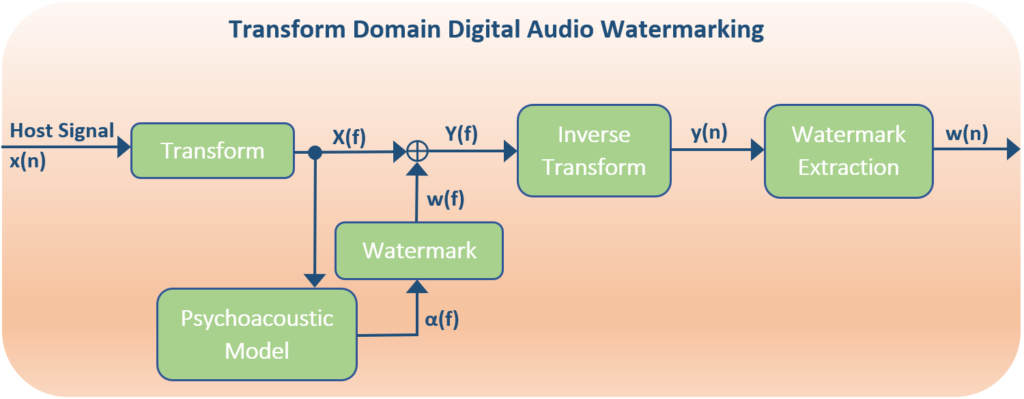There are many methods to digital audio watermarking, as discussed in the Categories of the Digital Audio Watermarking Embeddings and Detection. This article will focus on the transform domain approach of spread spectrum (SS). SS has foundations in radio communications, but the concepts are easily transferred to watermarking. It is difficult for an adversary to remove or destroy a watermark without destroying the quality of the audio signal when the watermark is spread across the spectrum.

Spread spectrum is popular method for watermarking because the original host signal is not required for detection of the watermark (blind detection). SS designs can also be non-informed, but often lead to imperceptibility issues. The human auditory system (HAS) is unable to perceive small changes in amplitude and phase, however, adding watermark data to quiet segments of audio shall be avoided. It is common practice to use the psychoacoustic frequency masking model to hide the watermark throughout the spectrum of the audio signal. Because we are working in the transform domain, the watermark can be embedded via amplitude and/or phase modulations.
The detection of the watermark data in SS systems relies on correlation metrics with tight synchronization between the received signal and the watermark. De-synchronization attacks can be quite problematic, but are bounded as the signal can only be scaled by so much before the attack ruins the audio quality. One approach to counter this attack is to add redundancy to the watermark signal. Redundancy can be added in both the time and frequency direction.
VOCAL Technologies, Ltd. has 35+ years experience in signal processing and can utilize this expertise to design a system to meet specific customer requirements.